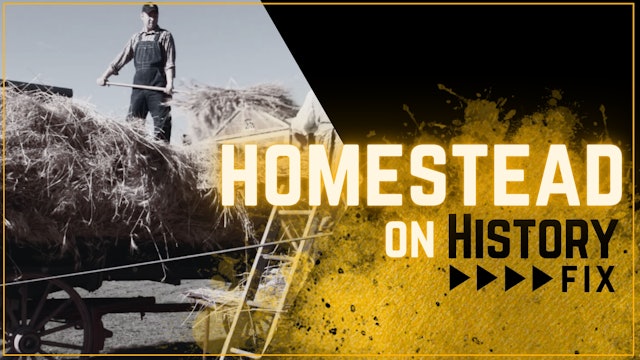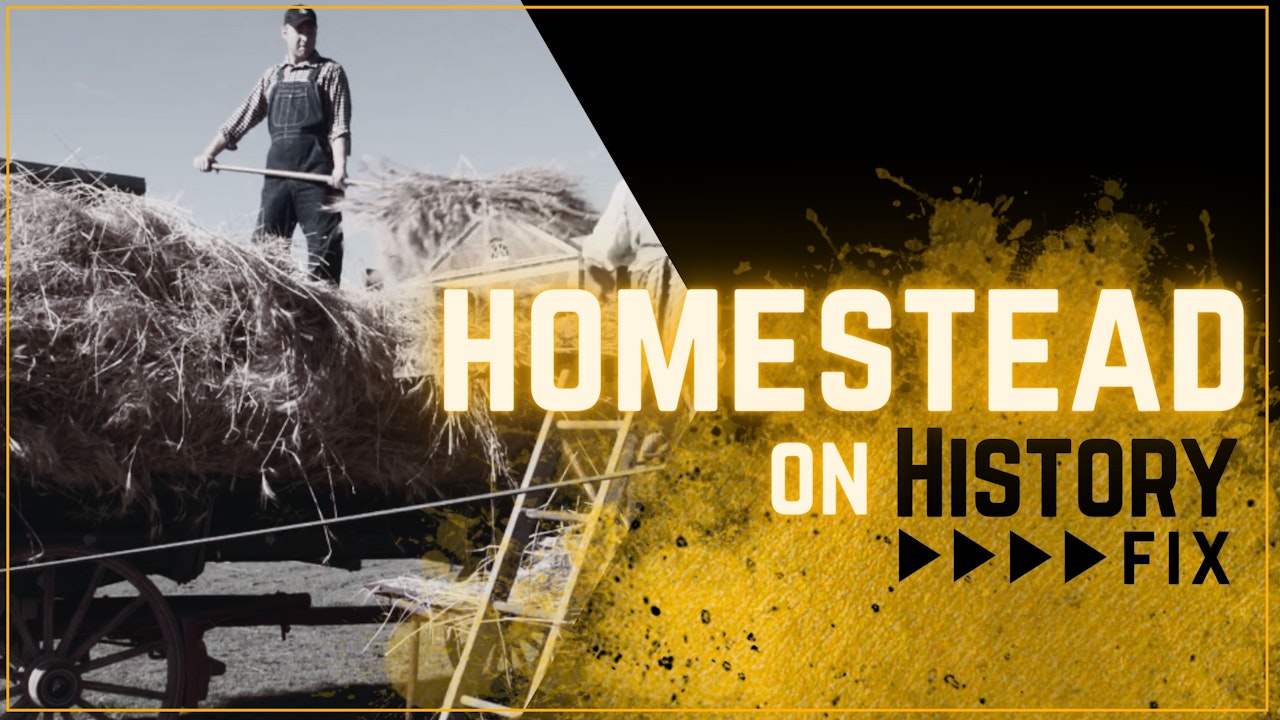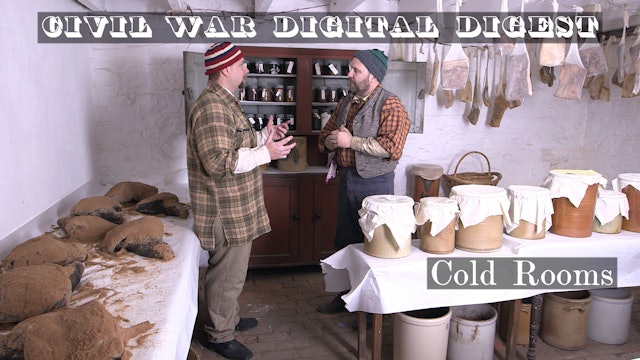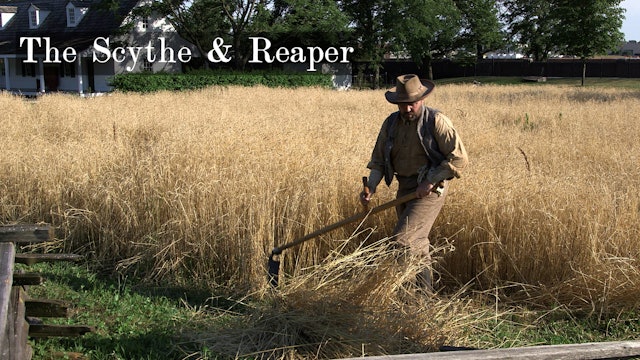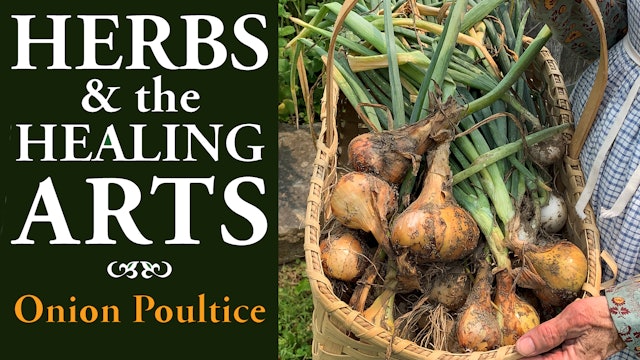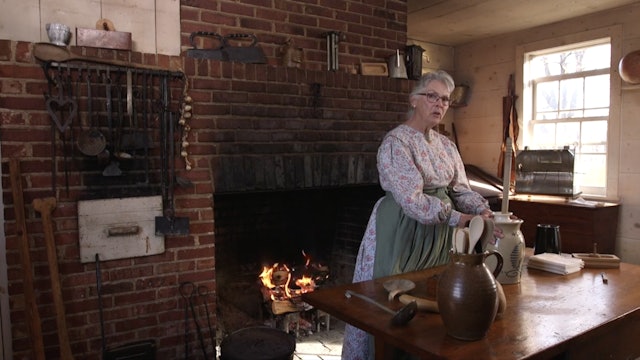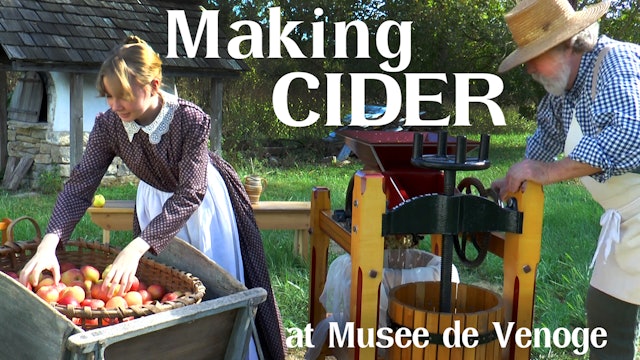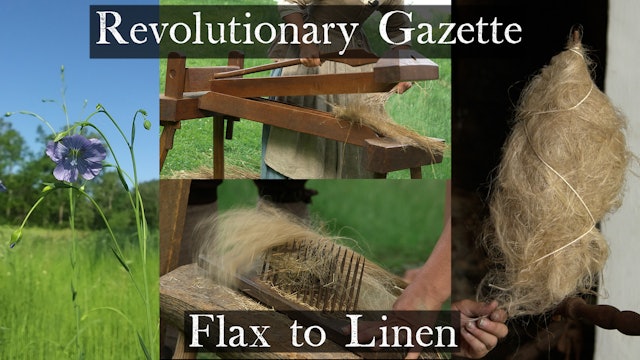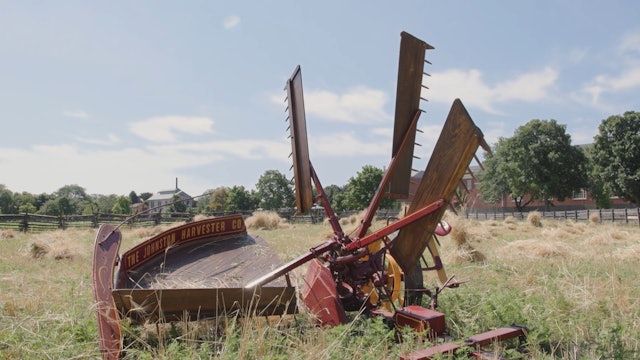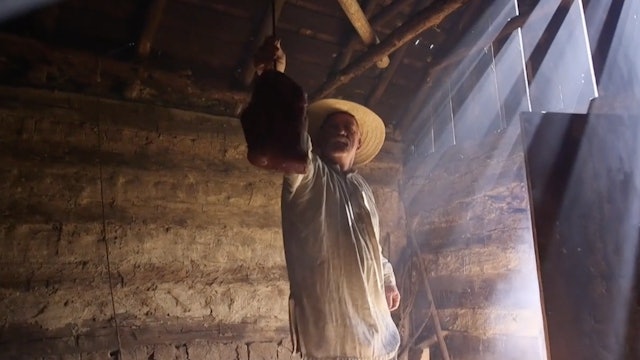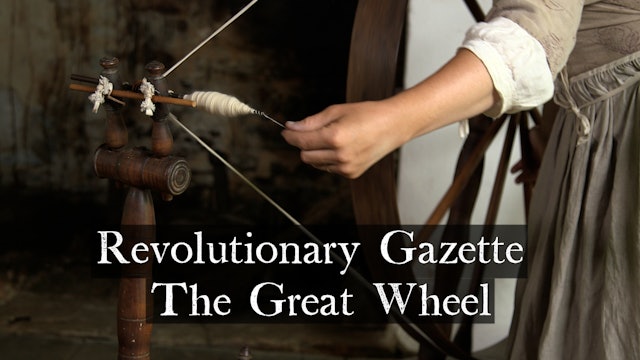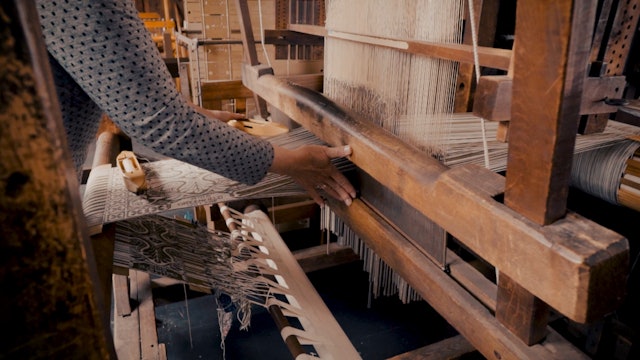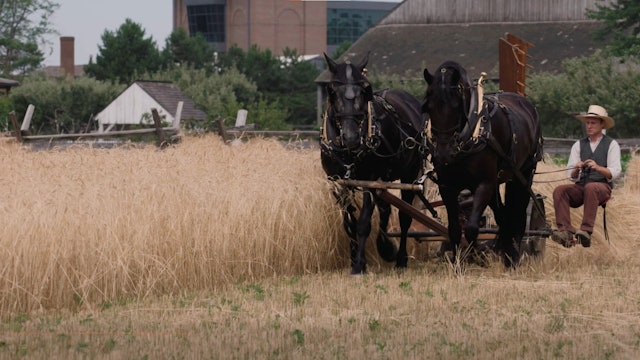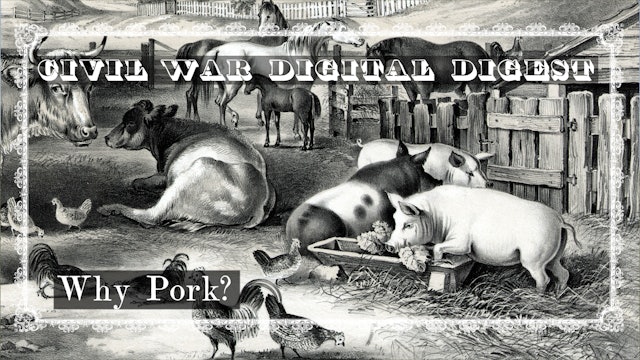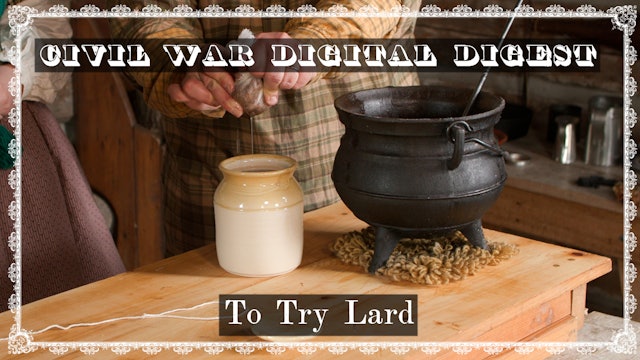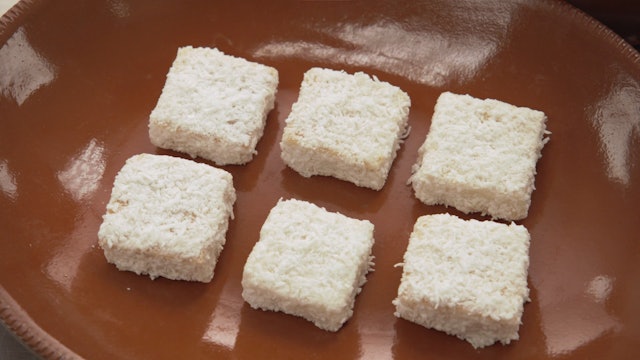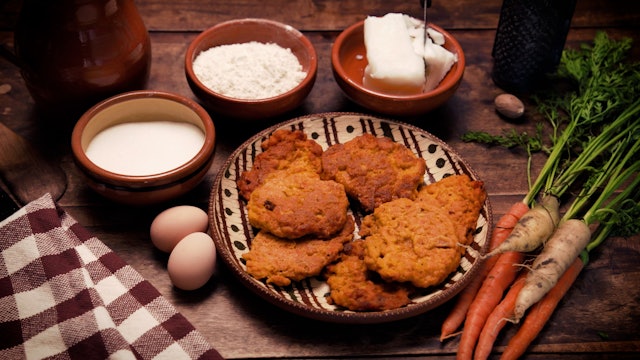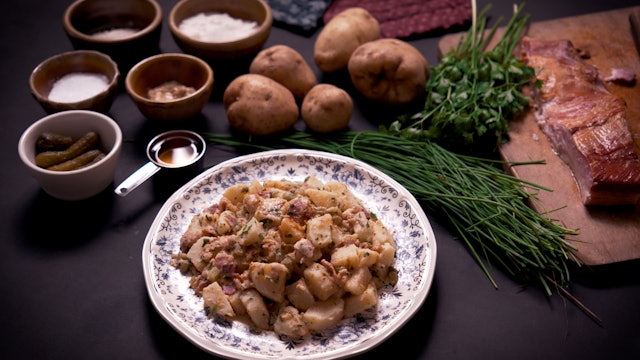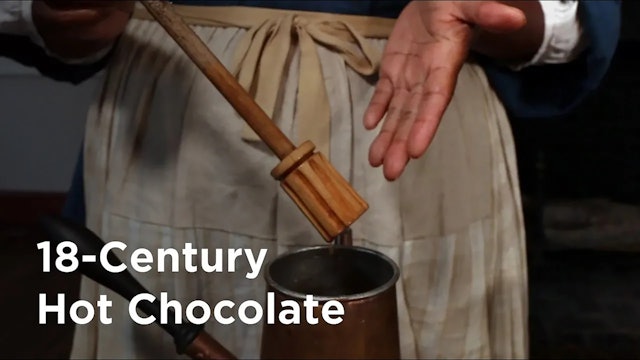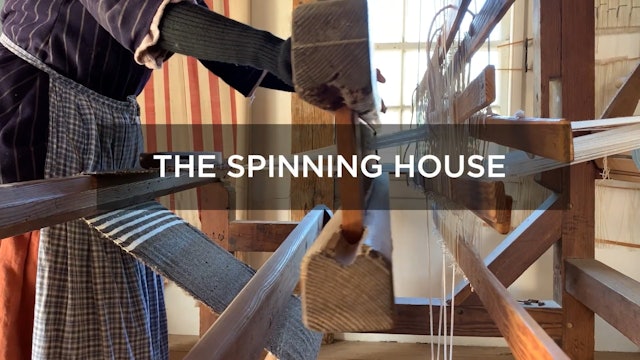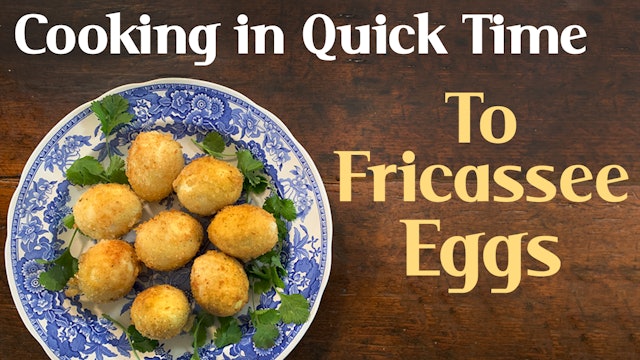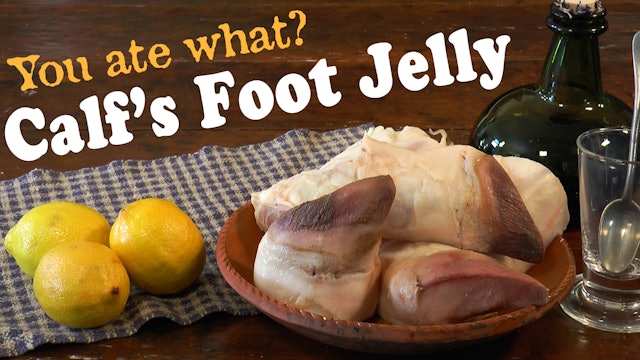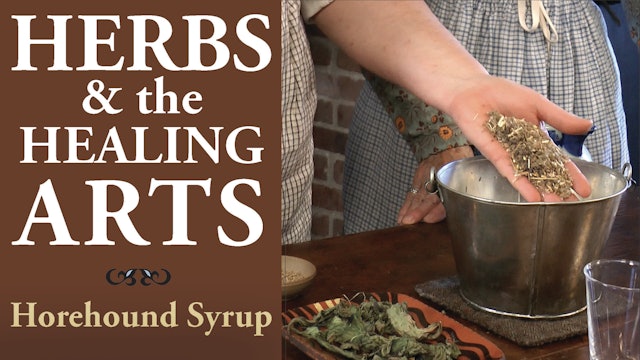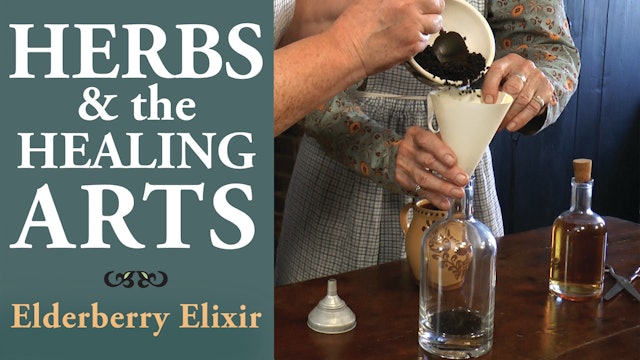Historic Homesteads
-
Cold Rooms
In this episode, we return to the Civil War era farm. If you had a cellar in your home and you lived in a climate that froze part of the winter, chances were you had a cold room. What was that? Join us as we visit with Brian James Egen and take a tour of a typical cold room. We explore how it wor...
-
Scythe & Reaper
Civil War Digital Digest has combined two of its popular episodes into in larger story. By adding new still images, video footage, and re-mastering the audio a more complete discussion is had about how the scythe was used in the Civil War era as well as the reaper which replaced it in many circum...
-
Onion Poultice
Onions have more uses than you know. This 16th century herbal burn remedy was discovered by Dutch physician Ambrose Pare. Mrs. Willyard and Mrs. Weaver give some first aid to an injured neighbor. They also share with you a simple cure you probably never knew.
This video demonstration is for 19...
-
Life at Thornhill Farm - Making Butter
See how they made butter in the early 19th century at Governor Fredrick Bates' Thornhill Mansion
-
Making Cider at Musee de Venoge
It’s a pressing matter, if you are an apple! But if you are not, you can still enjoy this wonderful video on making fresh apple cider at Musee de Venoge. Your host, Mike McHugh, demonstrates cider making on a press he restored. Learn the terminology and some secrets.
-
Turning Flax into Linen
Linen was a very common fabric in the Revolutionary War era - but where did it come from? Join us as we visit Colonial Pennsylvania Plantation and speak with Eva Mergen about how to grow and harvest flax and then process it into linen. This overview will take you from the field to the loom to the...
-
The History of Our 1880s Johnston Self-Rake Reaper
Wheat harvest was one of the most important days on the farming calendar for Midwestern farmers, including the Firestones. The Turkey Red winter wheat grown at Firestone Farm is an heirloom variety that is planted in the fall and harvested the following July when a span of hot and dry weather is ...
-
Life at Thornhill Farm- Using the Smokehouse
See how Governor Fredrick Gates of Missouri processed and cured meats in the early 1800's on his Thornhill Mansion where you can go and visit today.
-
The Great Wheel
Wool yarn was a necessary textile in the Revolutionary War era - but where did it come from? Join us as we visit Colonial Pennsylvania Plantation and speak with Eva Mergen about how to turn wool into yarn. We will also learn a little about popular sheep breeds of the era. This overview will take...
-
How an 1803 Jacquard Loom Led to Computer Technology
Joseph Marie-Jacquard developed the mechanical Jacquard loom in France in 1803. This innovative machine used punch cards to control the design of textiles made on the loom. These cards are predecessors to the modern-day computer punch cards and computer technology.
-
How Farmers Harvested and Threshed Wheat in the 1880s
Lazy days of summer start for some farmers only after they finish the most stressful time of their year – grain harvest. Weather conditions dictated the timing historically (and continue to do so today). At Firestone Farm, you can see the ways that farmers such as Benjamin Firestone combined weat...
-
To Try (or Render) Lard
Lard has many uses on the 19th century farm. Visit with Jeremy and Felicia from History Acres as they take you on the journey from harvesting lard, to preserving it, and then find out some of the uses!
Enjoy this program, which was re-edited by Civil War Digital Digest and includes additional im...
-
1915 Snowball Cookies from Edison Homestead
The snowball cookies are made at Edison Homestead in Greenfield Village. The recipe is taken from the 1915 Lake of the Woods Milling Company Limited, The Five Roses Cook Book.
Though called snowballs, the recipe called for these cookies to be cut into squares. Rest assured, they are just as de...
-
How to Make 1803 Carrot Fritters
Step inside the historic birthplace of William Holmes McGuffey and see a step-by-step historic cooking demo for an 1803 carrot fritter recipe. Kelly demonstrates what it was like cooking over an open hearth and using seasonal autumn ingredients.
This simple carrot fritter recipe uses orange and ...
-
How to Make 1915 Deviled German Potatoes
Step inside the historic Edison Homestead and see a step-by-step historic cooking demo for a 1915 deviled German potato recipe. Patience demonstrates what it was like cooking on an early 20th century coal-burning stove and using seasonal autumn ingredients, such as the potato.
The main ingredien...
-
Making Bitter Hot Chocolate, 18th Century Style
-
18th Century Weaving: A Spinning House Demonstration
-
To Fricassee Eggs
Eggs! How can I prepare thee? Let us count the ways by starting with a delicious recipe from 1824. Mrs. Weaver shows you how to cook eggs in a way you may not have thought possible. One thing is for sure, these Fricassee Eggs are delightful.
-
Calf's Foot Jelly - Weird Historic Recipes
We're the cooking show which asks aloud what you are thinking: "You ate what?" To start things off right we serve the dessert course first! Episode 1 features boots on the ground, or should we say hooves?
-
Horehound Syrup - Traditional Healing Recipe
Sickness was a constant companion in early 19th century Indiana. To relieve suffering, most families relied upon herbal knowledge passed down through the generations. Horehound, plantain, anise and honey made a soothing syrup.
This video demonstration is for 19th century historical purposes an...
-
Elderberry Elixir
In early 19th century Indiana, doctors were scarce. When sickness came, most families relied upon the herbal knowledge that had been passed down through the generations. Elderberries, honey and alcohol make up this elixir.
This video demonstration is for 19th century historical purposes and ...
